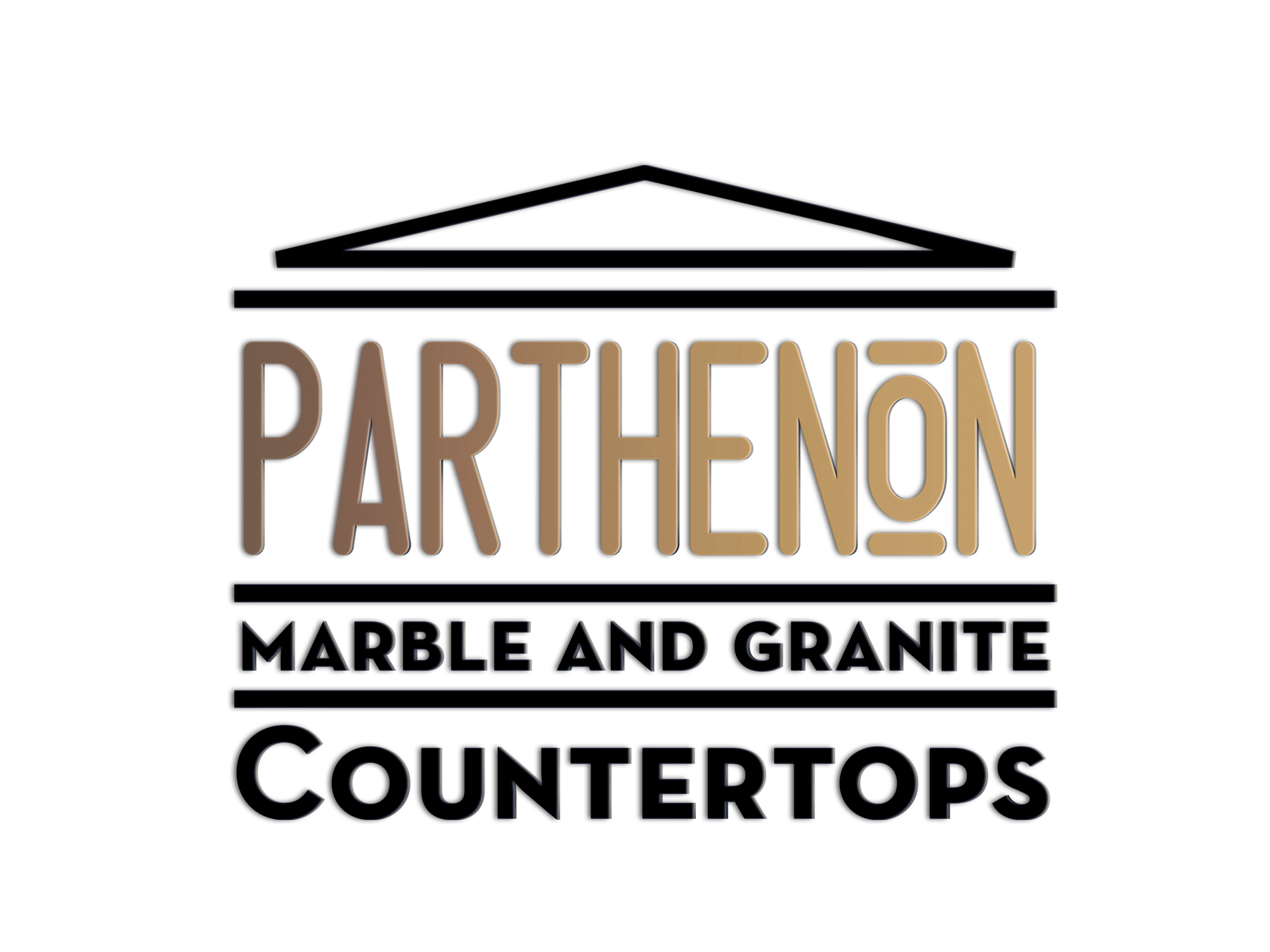Edge Selections
-
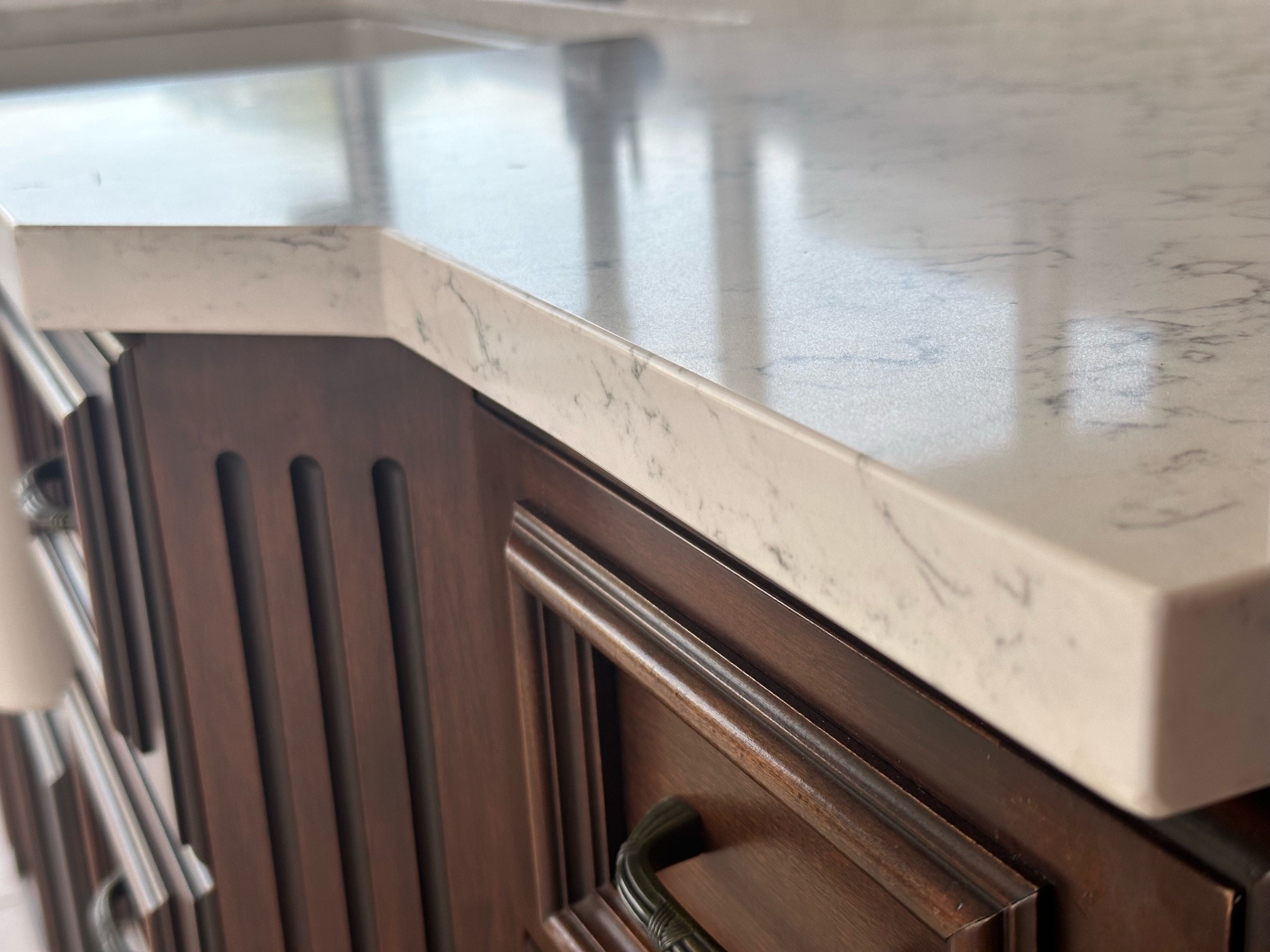
1
Eased/Flat Edge
An eased edge, also known as a Flat edge profile, is a type of edge treatment or finish that is our most common edge. It is a subtle and slightly rounded edge that is applied to the edges of countertops, window sills, curbs and other finished surfaces. The purpose of easing the edge is to make it more comfortable to touch and to reduce the sharpness of the corners. Eased edges are created by using a router or sanding equipment to gently round off the sharp edges of the stone surface. This process removes the sharp 90-degree angle, creating a smoother and more rounded edge with a slight curve. Eased edges are popular for various applications, including kitchen countertops, tabletops, shelves, and other stone surfaces. They provide a clean and modern look while adding a touch of safety and comfort. The degree of rounding or curvature in an eased edge can vary depending on the specific design preferences and functional requirements of the project.
-
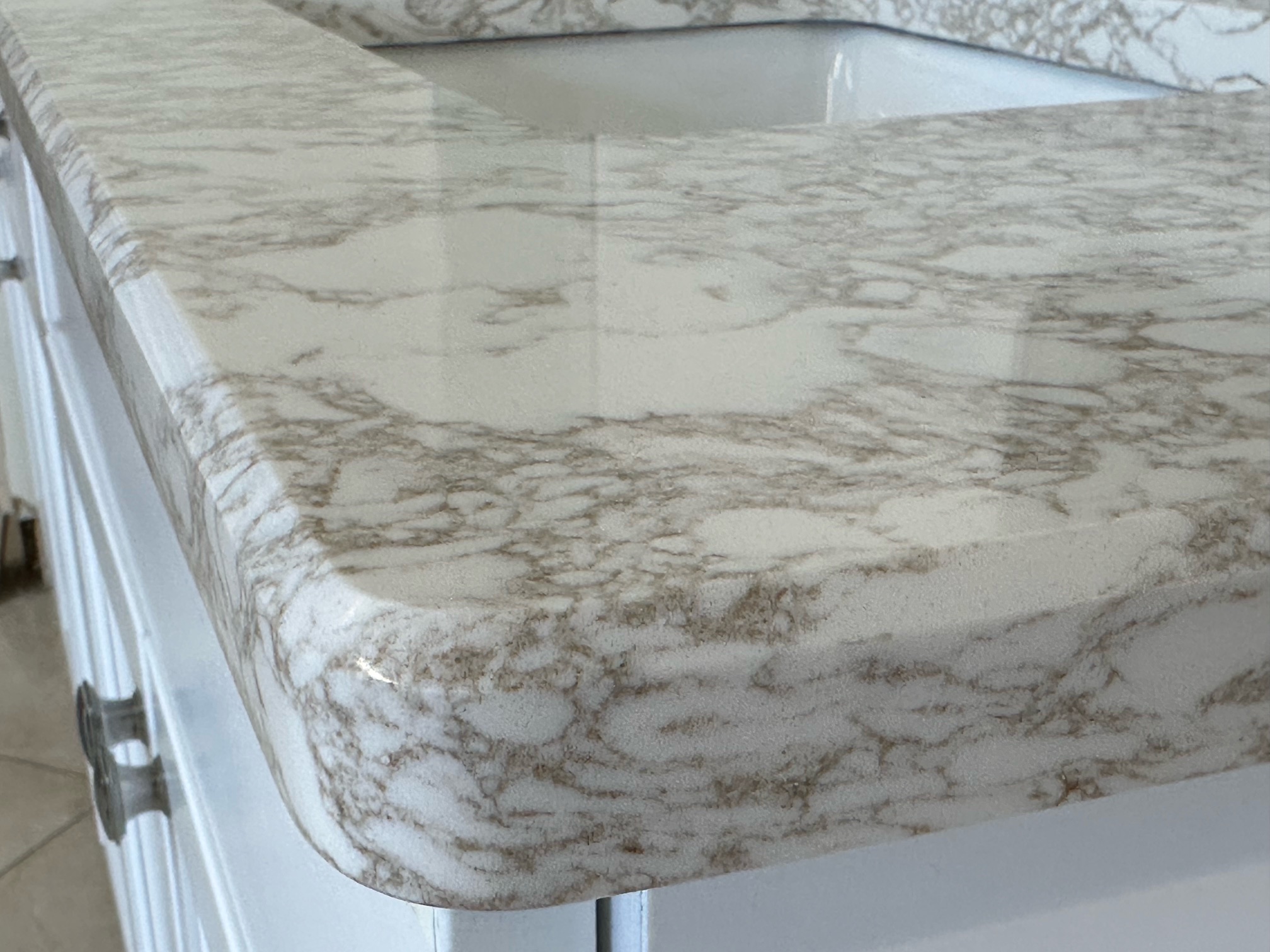
2
Quarter Beveled Edge
A Quarter beveled countertop edge is a type of edge treatment commonly used in countertop design. Unlike an eased edge, which features a subtle round or eased corner, a beveled edge is characterized by an angular cut or slope along the edge of the countertop. This means that instead of a straight 90-degree angle at the edge, there is a cut or chamfer that forms an angle, typically ranging from 15 to 45 degrees. The exact angle and depth of the bevel can vary based on design preferences. Beveled countertop edges have several advantages: Aesthetic Appeal: Beveled edges add a decorative element to countertops, giving them a more upscale and sophisticated appearance. The angled cut can create interesting visual effects, especially when light hits the edge at different angles. Safety: While not as rounded as an eased edge, a beveled edge is less sharp than a standard squared edge. This reduces the risk of chipping and provides a safer surface, especially in busy kitchens.
-
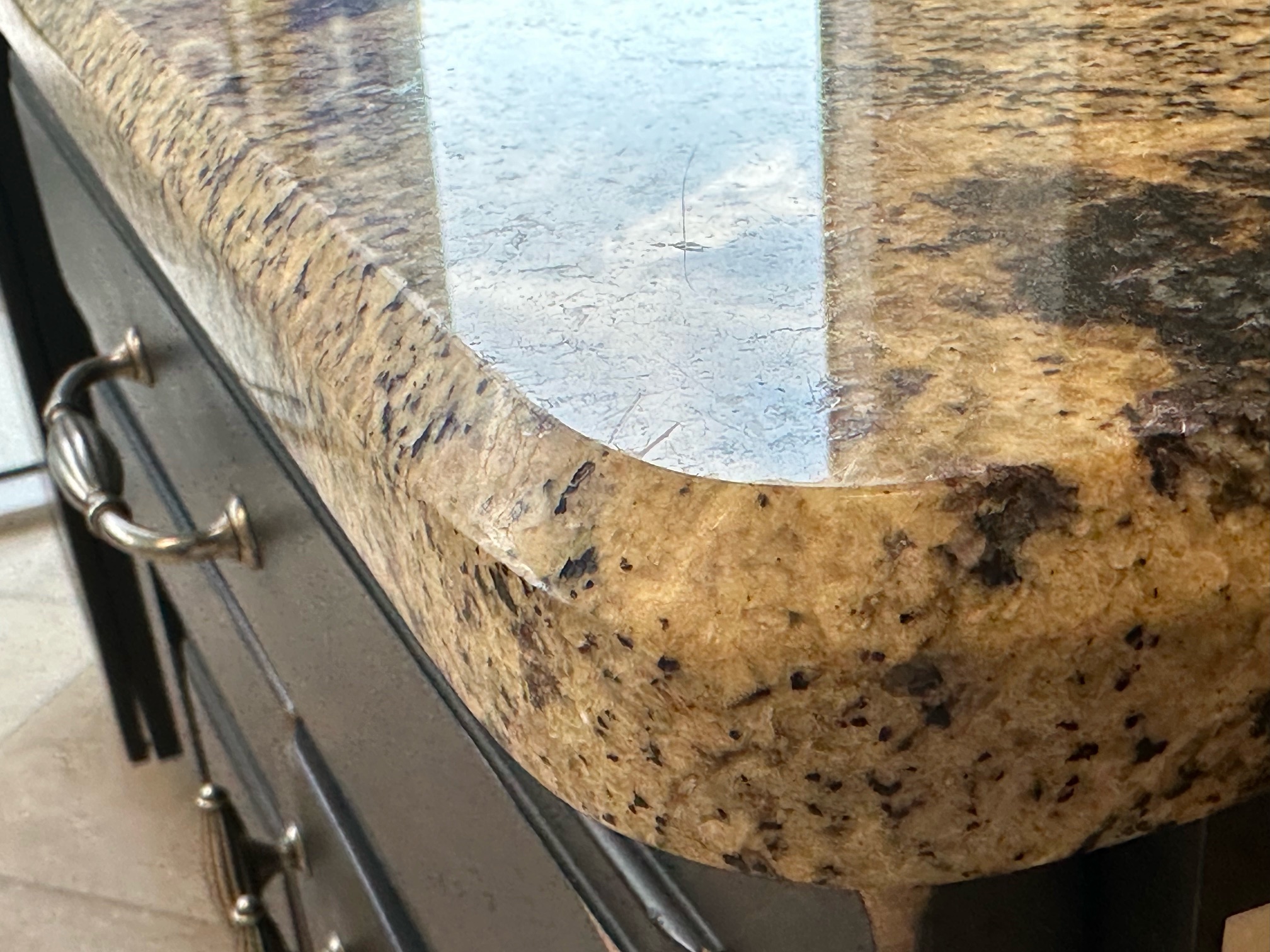
3
3/8" Beveled
A "3/8" beveled countertop edge" refers to a specific type of beveled edge treatment commonly used on countertops. In this case, "3/8" indicates the depth of the bevel. The measurement "3/8" means that the countertop edge has been cut at an angle, creating a beveled edge with a depth of 3/8 of an inch (or approximately 9.525 millimeters). This type of beveled edge is relatively shallow, and it provides a subtle decorative detail to the countertop without being too pronounced. It can add a touch of sophistication and visual interest to the countertop while still maintaining a clean and streamlined appearance. The beveled edge is often chosen for both its aesthetic appeal and its practical benefits, including safety and ease of cleaning, as mentioned in the quarter bevel edge description. The specific depth of the bevel can be customized to suit your preferences and the overall design of your kitchen or bathroom. When working with Parthenon Marble and Granite on selections or your designer, you can discuss the exact dimensions and angles of the beveled edge to achieve the desired look for your countertop.
-
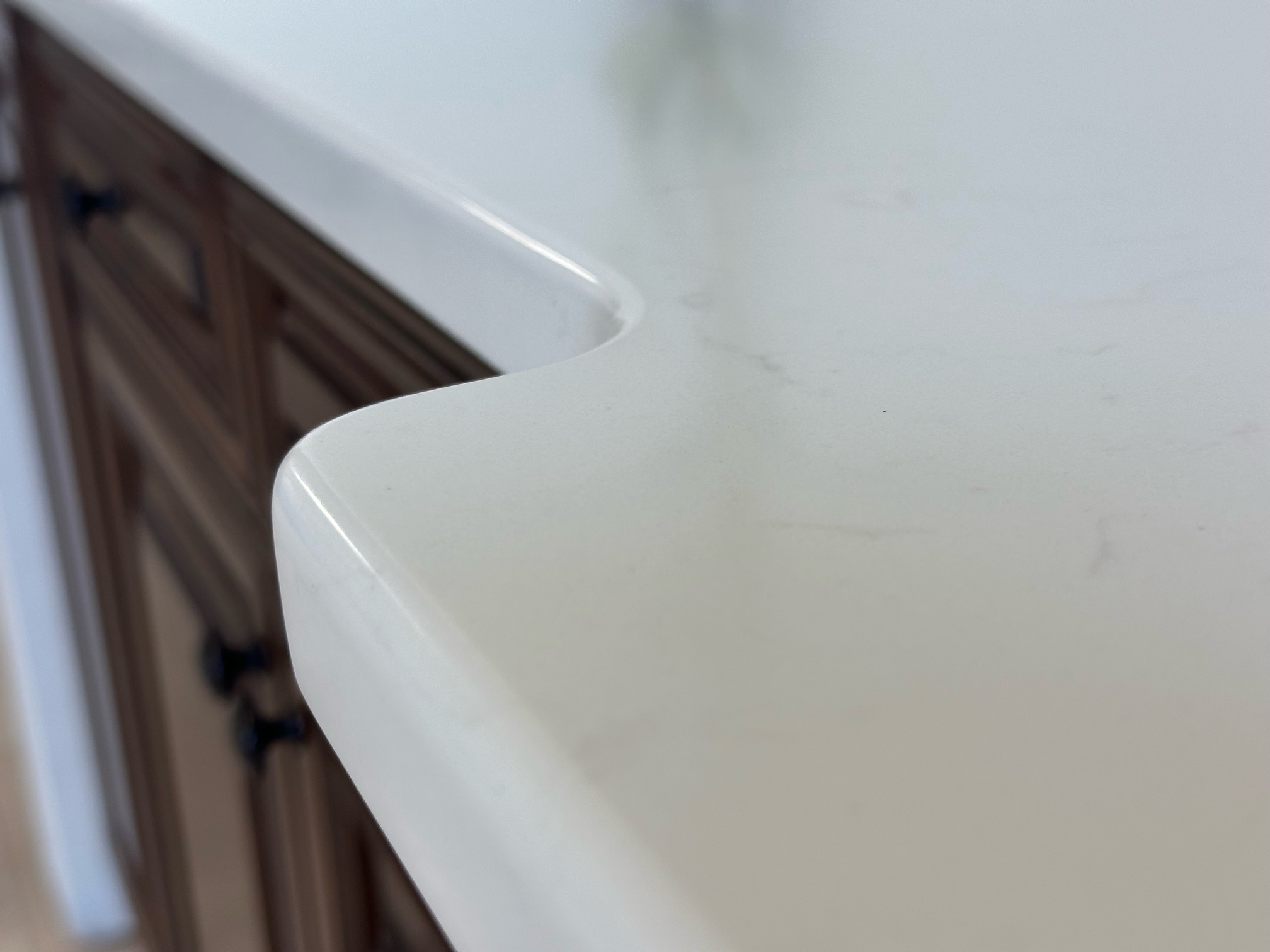
4
Quarter Round
A quarter round countertop edge is a type of edge profile used in countertop design. It features a rounded, convex curve along the top edge of the countertop, creating a quarter-circle shape. This edge profile is sometimes also referred to as a "radius" edge due to its curved appearance. Key characteristics of a quarter round countertop edge include: Curved Profile: The top edge of the countertop is curved in the shape of a quarter-circle. It has a continuous curve without any sharp angles. Safety and Comfort: Similar to other rounded edge profiles, the quarter round edge is safer to use, as it eliminates sharp corners that can pose a risk of injury. It's also comfortable to lean against or touch. Aesthetic Appeal: The quarter round edge provides a classic and elegant look to countertops. Its graceful curve adds a touch of sophistication to the overall design. Versatility: This edge profile can complement various kitchen or bathroom design styles, from traditional to transitional and contemporary. Ease of Cleaning: The smooth, rounded surface is relatively easy to clean, making maintenance straightforward. Durability: The curved edge can help protect the countertop from chipping or damage along the edge, enhancing its longevity. The size and radius of the quarter round edge can vary based on personal preference and design specifications.
-
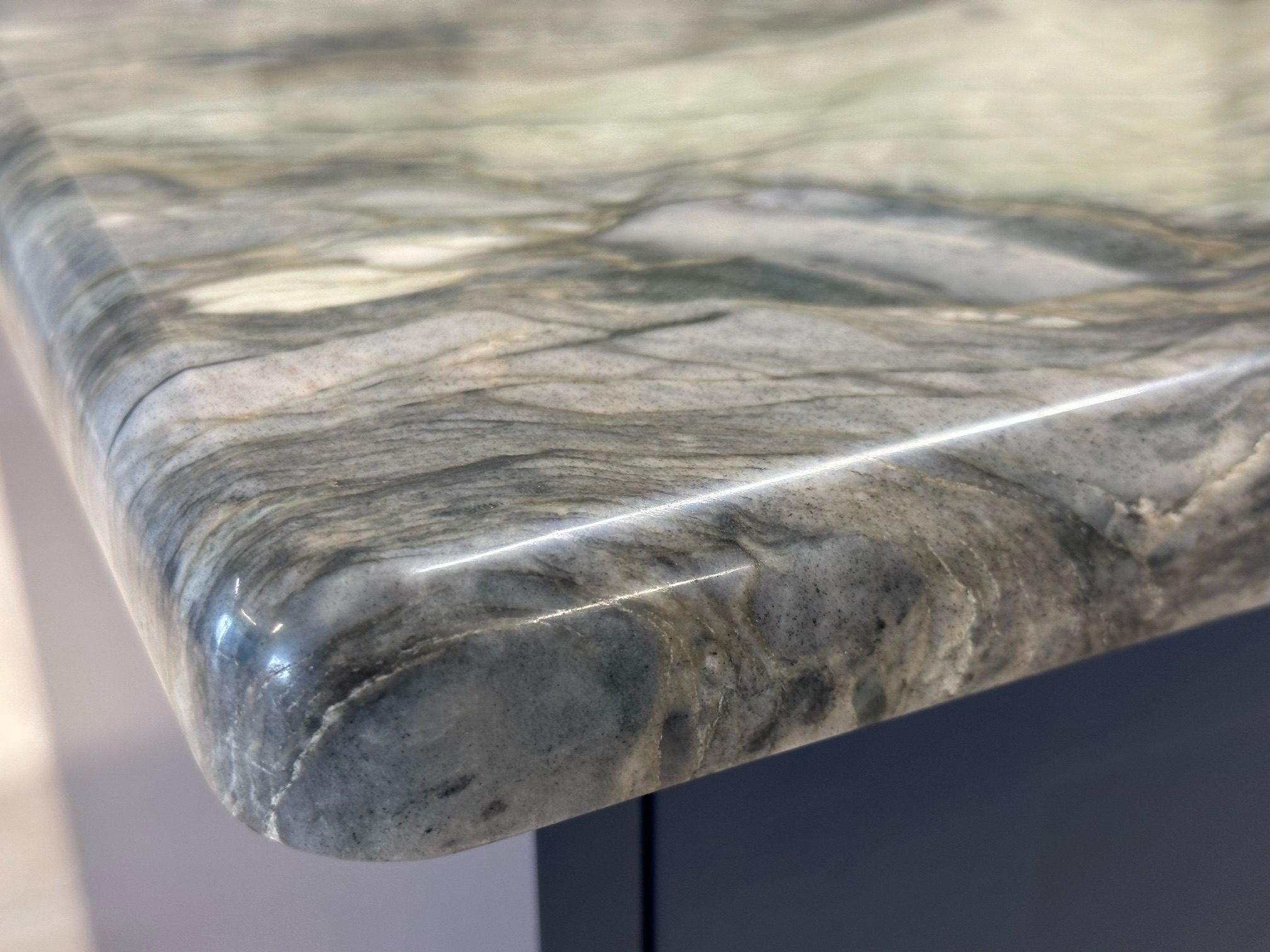
5
Half Bullnose
A "half bullnose countertop edge" is a popular edge profile used in countertop design. It is characterized by a semicircular, rounded edge on the top side of the countertop, while the bottom side remains flat and flush with the vertical surface of the countertop. This creates a smooth, rounded edge that is comfortable to the touch and visually appealing. Here are some key characteristics of a half bullnose countertop edge: Semi-Circular Profile: The top edge of the countertop is rounded in a half-circle shape, which means it forms a single, smooth curve. This curve is more pronounced than the subtle rounding of an eased edge. Safety and Comfort: The half bullnose edge is less likely to cause injuries or discomfort compared to a sharp, squared edge. It's especially popular in family homes and kitchens where safety and comfort are important considerations. Aesthetic Appeal: This edge profile provides a classic and timeless look to countertops. It's versatile and complements various kitchen or bathroom design styles, from traditional to contemporary. Ease of Cleaning: The smooth, rounded surface is relatively easy to clean, as there are no sharp corners where dirt and debris can accumulate. Durability: The rounded edge can help protect the countertop from chipping or damage along the edge, increasing its durability. The exact size and radius of the half bullnose can vary based on personal preference and countertop design specifications. When working with a countertop fabricator or designer, you can discuss the specific dimensions and details of the half bullnose edge to ensure it matches your overall design vision.
-
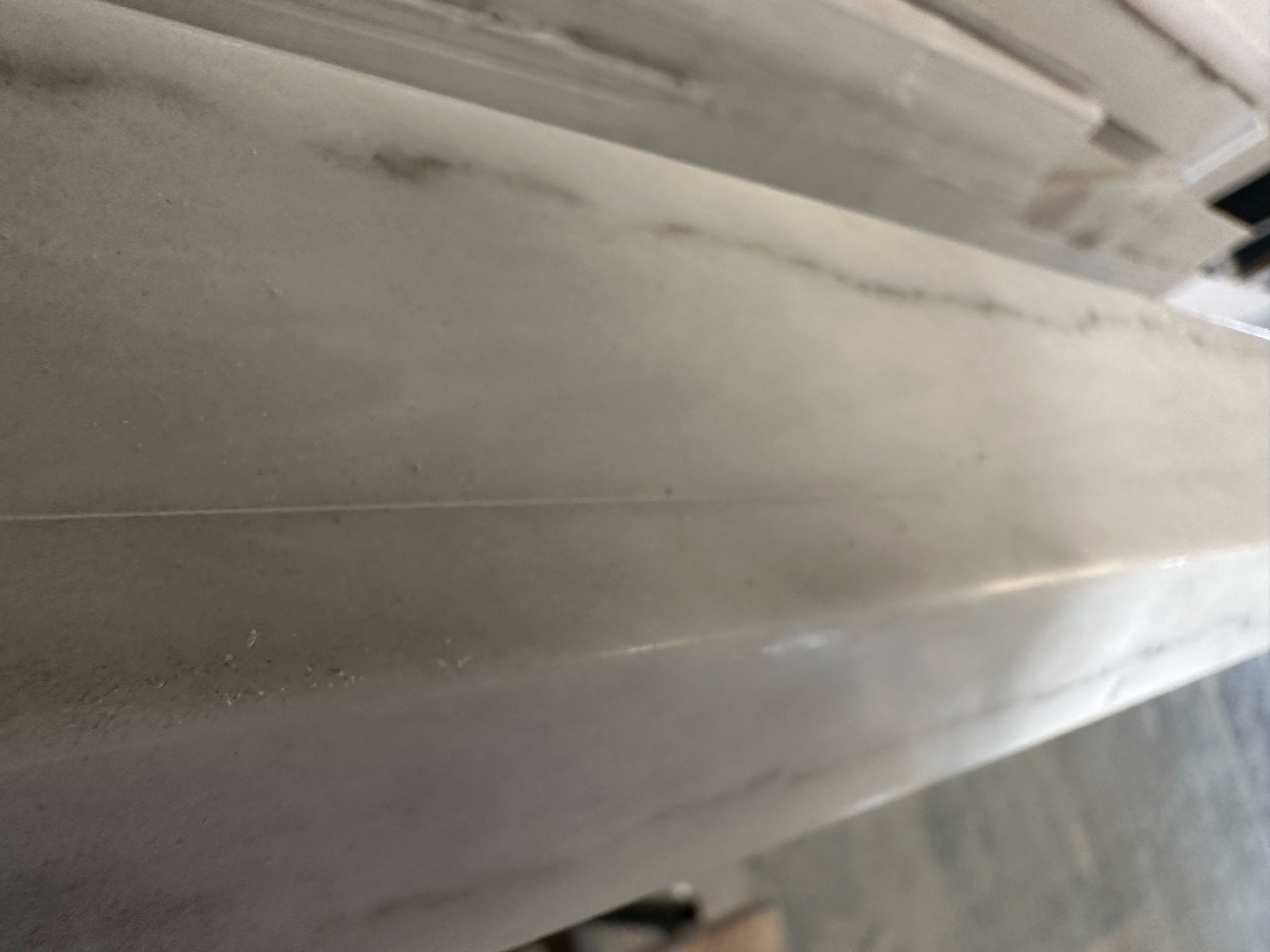
6
Laminated Edge
Laminated edge countertops refer to countertops that have a laminated or layered edge treatment. This type of edge treatment involves attaching a strip of laminate material to the exposed edge of the countertop substrate. The laminate material is often the same material used for the countertop surface, such as marble, granite quartz or quartzite. Here are some key points about laminated edge countertops: Edge Material: The edge material is typically a thin strip of the same material as the countertop surface. Appearance: Laminated edges are designed to create a bulkier and uniform appearance. They are often chosen to match the countertop surface, ensuring that the edge and the surface look like one continuous piece. (Seams on this edge are visible) Durability: Laminated edges add durability to the countertop by protecting the vulnerable edge from chipping and wear. This can extend the lifespan of the countertop. Design Options: Laminated edges come in various profiles, including beveled, square, eased, and more. The choice of profile can influence the overall aesthetic of the countertop. Cost-Effective: Laminated edge countertops are generally more cost-effective compared to countertops with more intricate edge profiles, such as solid stone edges. Easy to Clean: The smooth surface of laminated edges is easy to clean and maintain, and there are no crevices or sharp edges where dirt can accumulate. Laminated edges are commonly used in kitchens and bathrooms where budget considerations are important, but a clean and finished edge appearance is still desired. They are also a practical choice for spaces where the edge is less visible, such as under a countertop overhang. The specific design options and availability of laminated edges may vary depending on the countertop material and the manufacturer.
-
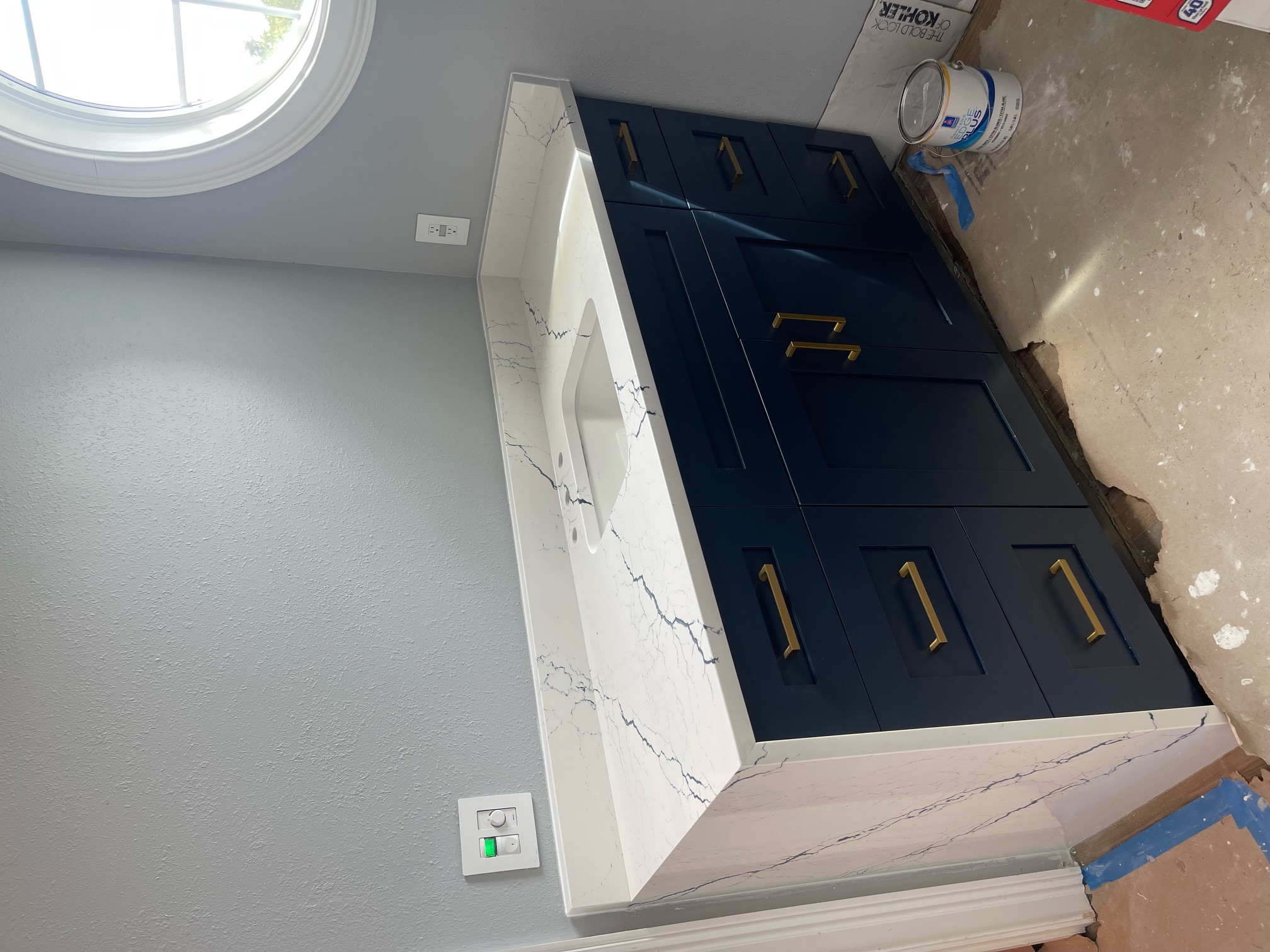
7
Waterfall
A waterfall edge countertop is a stylish and modern design feature often used in kitchen and bathroom spaces. This type of countertop design extends the countertop material vertically down the sides of cabinets or an island, creating a continuous and uninterrupted look that resembles a "waterfall" cascading down the sides. This type of edge is used in conjunction with Eased/Flat edging. Here are some key characteristics and benefits of a waterfall edge countertop: Continuous Flow: The countertop material (e.g., quartz, marble, granite, or quartzite) extends seamlessly from the horizontal surface down to the floor or the base of the cabinets, creating a sleek and uninterrupted appearance. Aesthetic Elegance: Waterfall edge countertops are known for their aesthetic appeal and contemporary design. They add a touch of luxury and sophistication to the space, making them a popular choice in high-end kitchen and bathroom designs. Versatility: This design can be applied to various countertop materials, making it suitable for a wide range of interior design styles, from modern and minimalist to transitional and even some traditional settings. Durability: The extended vertical surface adds an extra layer of protection to the cabinet sides, helping to guard against scuffs, dings, and wear and tear. Customization: You can choose the thickness of the countertop material to create different visual effects. Thicker countertops can have a more substantial, bold appearance, while thinner ones can provide a more understated look. Design Statement: A waterfall edge countertop serves as a focal point in the room and can be used to showcase the beauty of the countertop material. It can also emphasize a specific area, such as a kitchen island or vanity. Variations: While a traditional waterfall edge extends the countertop material down both sides, some variations involve a partial waterfall edge, where the material only extends partway down the sides, providing a unique twist on the design. Waterfall edge countertops require careful planning and precise installation to achieve the desired look. The countertop material should be carefully mitered and joined at the corners to maintain the continuous flow of the design. Additionally, the choice of countertop material and its color and pattern should align with the overall design scheme of the space. While veining is typically continuous the natural characteristics of the stone selected will determine the final outcome of the waterfall edge. Overall, a waterfall edge countertop is a striking design element that can transform the look and feel of a kitchen or bathroom, adding elegance and sophistication to the environment.
-
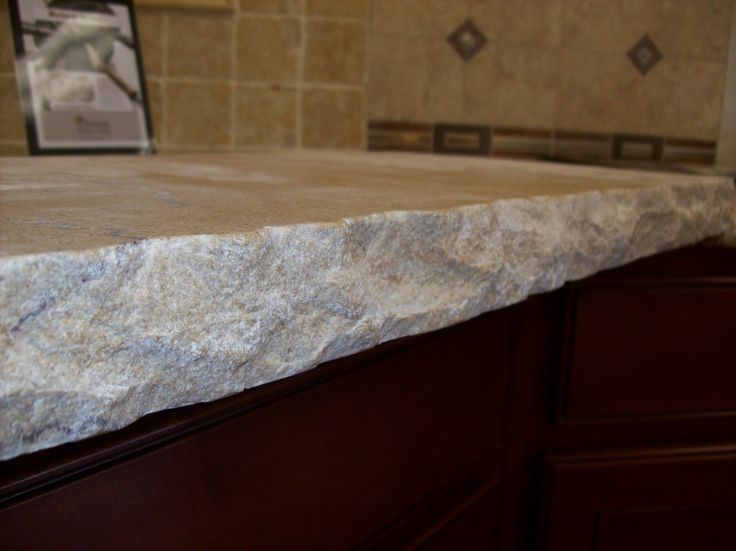
8
Chiseled
A chiseled edge countertop is a distinctive and rustic edge treatment commonly used with natural stone countertops, such as granite, marble, or some quartz products. This edge profile is designed to replicate the look of a rough-hewn or hand-chiseled edge that you might find in traditional stone craftsmanship. Here are some key characteristics and considerations regarding chiseled edge countertops: Rustic Appearance: Chiseled edge countertops have a rugged and natural appearance. The edges are intentionally irregular and uneven, mimicking the appearance of stone that has been chiseled by hand. Texture: The chiseled edge creates a textured surface along the perimeter of the countertop. This texture contrasts with the smooth, polished surface of the countertop's top and adds a tactile element to the design. Visual Interest: The irregular and jagged edge profile adds visual interest to the countertop and can serve as a focal point in the kitchen or bathroom. It can also complement rustic or traditional interior design themes. Durability: Despite their rough appearance, chiseled edge countertops are still made from durable natural stone materials. The rugged edge can help conceal minor wear and tear over time. Customization: The degree of chiseling can be customized to achieve the desired level of ruggedness. Some chiseled edges may have more pronounced and irregular chisel marks, while others may have a subtler texture. Sealing: It's important to note that chiseled edges may require additional sealing compared to polished edges to help protect against staining and moisture absorption. The specific maintenance requirements can depend on the type of natural stone used. Compatibility: Chiseled edge countertops are often used in rustic or Mediterranean-inspired kitchens and bathrooms. They pair well with farmhouse sinks and other elements that enhance the rustic aesthetic. Safety: The chiseled edge, while adding character, may not be as comfortable to lean against or touch as a smoother edge profile. It's important to consider comfort and safety when choosing this edge treatment. Chiseled edge countertops can be a unique and eye-catching addition to your kitchen or bathroom, especially if you are looking to create a warm and rustic ambiance. However, due to their textured and irregular nature, they may not be suitable for all design styles or personal preferences. It's essential to discuss your options with a countertop fabricator or designer to ensure that a chiseled edge aligns with your overall design vision and functional needs.
Our Customer Say...

Location
-
Parthenon Marble and Granite
7140 US Hwy 19
New Port Richey, Florida 34652
- (727) 842-5511
- sales@parthenonmg.com
Hours
9:00 am - 4:00 pm
9:00 am - 12:00 pm
Closed
